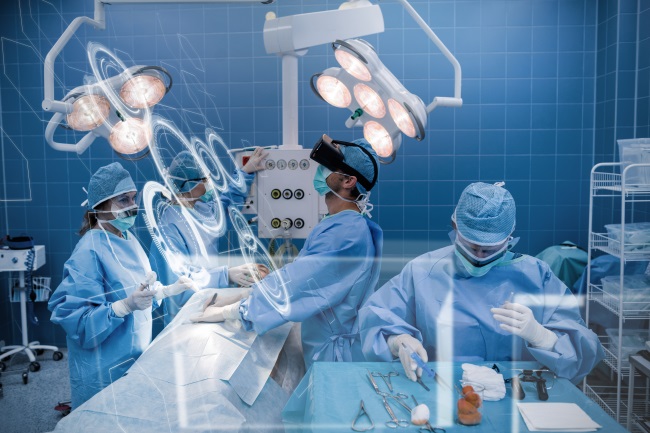Singapore researchers are pushing boundaries in the use of virtual reality (VR) as a tool through significant new developments in the medical field.

By Jeremy Torr
Medical VR applications, such as augmented vision surgery, remote treatment and distance diagnosis, are becoming increasingly common worldwide. In Singapore, new techniques are being pioneered that go further to help provide non-invasive and completely safe outcomes without using established trial-practice-and-error approaches.
The Infocomm Media Development Authority (IMDA) is teaming up with some of the world’s best environment creators at Side Effects Asia Pacific Pte Ltd (SEAP) to work on VR technology systems for advanced clinical training.
“This [partnership] could not have happened at a better time; virtual reality has come of age for clinical, research and… classroom applications,” said Mr TK Ng, Managing Director, Side Effects Asia Pacific.
The new systems will enable trainees to experience realistic 3D medical emergency scenarios, allowing digital feedback and overlay information to be integrated with existing medical images. In other words, trainees will be able to experience and practice fully immersive, on-the-spot decision-making scenarios during the resuscitation of critically ill or severely injured virtual patients.
“The main value for VR training is that trainees can practise and hone skills in their own time and pace,” explained Ooi London Lucien, Professor of Surgery at Duke-NUS Graduate Medical School.
Professor Ooi added that training tasks can be tracked and monitored to enhance competency assessments before allowing someone to start operating on real patients, and described the use of VR technology as “one of the most objective tools for surgical skills assessments compared to current observership methods.”
At Yong Loo Lin School of Medicine in NUS, the Centre for Healthcare Simulation (CHS) is also working to expand the use of VR apps in its training with the objective of bringing a reduction in the use of cadavers in training.
CHS is also working on a new Virtual Interactive Simulation Environment (VISE) that will provide a 3D virtual environment platform that caters for multiple trainees at the same time. “The use of VR also means that we don't have to physically create the scenario – for example, in the case of a mass-casualty situation,” said Associate Professor Suresh Pillai of the Yong Loo Lin School of Medicine’s CHS.
The technology could simulate a whole range of scenarios including a mass-vehicle accident or an industrial incident, where trainees can safely experience multiple issues that need urgent and accurate triage responses.
Lim Chee Kean, CEO of Singapore-based Internet-of-Things enterprise Ascent Solutions noted that this new VR approach offers multiple benefits, such as being cost-effective; safe; and providing the closest thing to realism in clinical education and training of healthcare professionals. “It will allow both basic procedural skills and difficult surgical procedures to be practised and [repeatedly] rehearsed to improve performance in real-life situations.”
But researchers are not only looking at critical care or emergency scenarios. Earlier this year, Singapore hosted the Asia-Pacific Meeting on Simulation in Healthcare, where researchers discussed the latest developments in medical VR including its use in non life-threatening scenarios.
In reconstructive surgery, the use of VR offers a whole new platform for allowing patients to see the potential outcome of any operation – and to even have a say in the process. Crippling yet non-life-threatening conditions, such as agoraphobia (an extreme or irrational fear of public places) and chronic acute anxiety, are also being investigated as likely candidates for virtual treatments. The use of VR allows non-threatening yet infinitely controllable conditioning based on virtual environments – and can even be extended to common problems like breastfeeding, to virtually prepare would-be mothers for potential challenges that may arise and reduce instances of post-partum depression.
“In the field of medical and surgical skills training, Singapore has been and continues to be a focal point for training in the region,” noted Professor Ooi. “And Academia, which is Singhealth’s education and research building, houses probably one of the largest and most comprehensive skills training centre in the world.”
Looking ahead to the future, Minister for Communications and Information Dr Yaacob Ibrahim said that Singapore is well-placed to thrive in this digital economy. “IMDA will not confine its efforts to the infocomm and media sector, but work on every sector which can benefit from using infocomm and media better,” he said at the launch of the IMDA in September.


.webp)